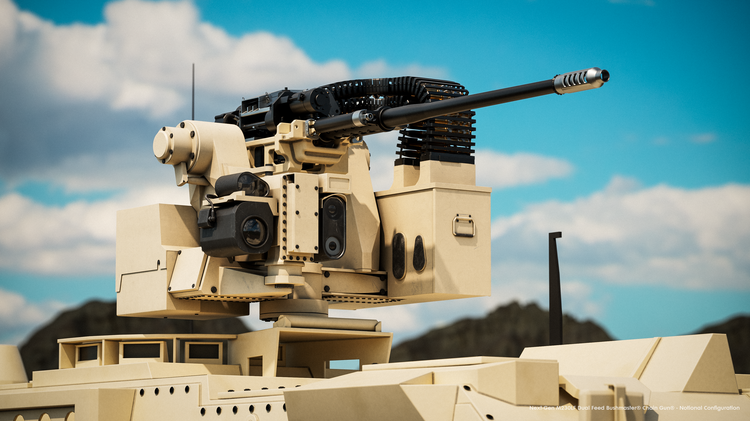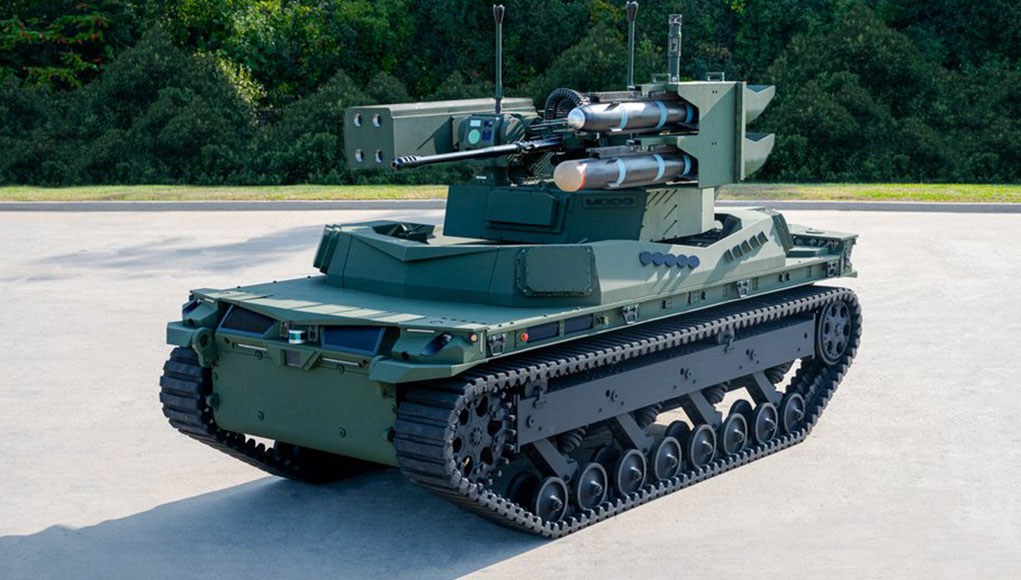Army Air Defense Undergoes Significant Modernization to Counter Drone Threats
The U.S. Army’s air defense branch has experienced its most substantial modernization and growth in over four decades, primarily driven by the need to counter the rapidly evolving threat of unmanned aircraft systems (UAS). Col. Glenn Henke, commandant of the Army Air Defense Artillery School, highlighted the publication of the Army’s first techniques manual for counter-UAS operations, which is now on a 12-to 14-month revision cycle to keep pace with technological advancements.
The proliferation of drones at a commercial scale has become a significant concern for military planners. Adversary nations are increasingly investing in these cost-effective systems, which can be used to harass, confuse, and complicate U.S. military operations. The ongoing conflicts in Ukraine and the Middle East have provided valuable insights into drone warfare, with Col. Nicholas Ryan, director of the Army capability manager for unmanned aircraft systems, describing these conflicts as “the best innovation lab we could ask for.”
As the Army adapts to this new reality, it focuses on integrating new capabilities into its formations rather than acquiring new equipment. This approach requires constant updates to doctrine, processes, and procedures to match the rapid pace of technological change. Retired Lt. Gen. Anthony Crutchfield, now vice president of Army systems at Boeing, emphasized the need for ongoing discussions and adaptations, stating, “The problem that we solve today will not be the problem to face tomorrow.”
The impact of these evolving threats extends beyond technology, fundamentally altering battlefield dynamics at every level. Col. Ryan noted that even platoon leaders now can affect and control three-dimensional battle space, highlighting the expanding responsibilities across all echelons of command in the air-ground littoral. This shift in battlefield geometry underscores the comprehensive nature of the changes facing the Army’s air defense capabilities as it evolves to meet modern threats.

Northrop Grumman Introduces Enhances FAAD with Advanced AI Capabilities and 30mm New Cannon at AUSA 2024
Northrop Grumman Corporation has unveiled a new artificial intelligence (AI) feature for its Forward Area Air Defense (FAAD) system, introducing the Advanced Battle Manager (ABM) to address the growing complexity of counter-unmanned aerial systems (C-UAS) missions. This cutting-edge enhancement streamlines decision-making processes, allowing warfighters to defeat UAS swarms with a single button click on a mobile tablet.
The ABM system leverages AI and years of live fire data to make real-time weapon-target pairings across various kinetic and non-kinetic weapons. Successfully tested at the Yuma Proving Grounds in Arizona during spring and late summer, the system demonstrates remarkable efficiency by planning for complex aerial swarm scenarios and generating engagement plans in under a quarter of a second. The ABM’s open architecture design supports multiple weapon types and allows for easy integration of new weapons in the future.
FAAD, which simultaneously integrates short-range air defense, counter-rocket, artillery, mortar, and C-UAS missions, now provides enhanced interoperability for U.S., allied, and coalition forces. The system offers a single integrated air picture, airspace coordination, deconfliction, and fire control to support multi-domain missions. With its cyber-certified, real-time safety-critical command and control software, FAAD can rapidly deploy to areas with limited communication infrastructure. It is the centerpiece for the U.S. Army’s fixed site and maneuver forces.
The company has also introduced its next-generation M230 Link Fed (M230LF) Dual Feed Bushmaster Chain Gun, a 30x113mm medium caliber chain gun optimized to counter uncrewed aerial threats (C-UAS) and engage ground targets. This new variant of the M230LF chain gun offers two ammunition feed paths, eliminating the need for mixed ammunition belts in a single feed. This technique allows operators to switch between two types of ammunition instantly. A standard recommended ammunition load includes XM1211 proximity fuzed rounds for C-UAS and XM1198 high explosive, dual-purpose rounds for anti-armor capability. This dual feed system enhances mission flexibility and lethality, enabling operators to address different target types more efficiently, reduce logistical burdens, and engage more targets before reloading.
Currently at Technology Readiness (TR) Level 6, the M230LF is scheduled for live fire demonstrations in early 2025. The new chain gun maintains a similar weight to the single-feed M230LF and features 60% part commonality, facilitating faster routine repairs and decreased maintenance downtime for operators already using the M230LF.
Anduril Industries Secures Air Defense Production Contract with Department of Defense
The Department of Defense has awarded Anduril Industries a $250 million contract to produce air defense systems. This contract will deliver more than 500 Roadrunner-Ms and additional Pulsar electronic warfare capabilities, addressing the growing threat of unmanned aerial systems (UAS) attacks against U.S. forces. Deliveries will begin in the fourth quarter of 2024 and continue through the end of 2025.
Anduril’s Roadrunner system, a high-explosive vertical takeoff and landing (VTOL) interceptor, was unveiled last year. It has been developed to rapidly intercept and neutralize larger UAS threats with unmatched speed, maneuverability, and cost efficiency. Paired with Anduril’s Pulsar family of AI-enabled electronic warfare systems, this new generation of UAS defense capability will be deployed to operational sites in priority regions where U.S. forces face significant UAS threats, further enhancing U.S. air defense capabilities at the tactical edge.
Roadrunner has been operationally deployed for Combat Evaluation since January 2024, and Pulsar has been operationally deployed in multiple regions since August 2023. This latest contract award highlights Anduril’s fast response to developing and scaling defense systems. Roadrunner went from an idea to a combat-validated and fieldable solution in less than two years, much faster than most traditional defense contractors’ timelines.
L3Harris Unveils Advanced Proximity Fuzes for C-UAS Rockets
L3Harris Technologies has introduced new proximity fuzzes designed to expand the capabilities and effectiveness of the Advanced Precision Kill Weapon System (APKWS) for ground—and air-launched applications against ground and air targets.
The L3Harris Hydra 70 Proximity Fuze combines an advanced Proximity Sensor with modern electronics, building upon the proven M423 Point Detonating (PD) Hydra Fuze. This new fuze offers two factory-programmable modes: a proximity mode for counter-unmanned aerial system (C-UAS) applications, proven effective against Group 2 and Group 3 threats, and a Height of Burst (HOB) mode for ground targets. The fuze is designed to thread directly onto existing Hydra 70 warheads while maintaining its predecessors’ safety features. Additionally, it incorporates redundant backup function modes to eliminate the risk of dangerous unexploded ordnance (UXO).
L3Harris has also developed a new electronic safe, arm, and fire (ESAF) system for rockets, which builds upon the technology used in their proximity fuze. This ESAF system includes enhanced safety features, additional modes, and increased reliability. It is a dual-safe electronic fuze that fully complies with MIL-STD-1316 standards. The ESAF’s flexible fuzing architecture allows for future incorporation of impact delay capabilities. It can be paired with current and future warhead configurations in nose-mounted, base-mounted, or mid-body positions. Furthermore, the system incorporates a communication link for the guidance kit interface and gunner-selectable engagement modes, paving the way for future capabilities when used in guided rocket applications.

Rafael Unveils a Mobile Counter-UAS Solution at AUSA 2024
Rafael Advanced Defense Systems is introducing a new Counter-Unmanned Aerial System (C-UAS) solution as part of a force protection mission package displayed at the Association of the United States Army (AUSA) 2024 Annual Meeting and Exposition. The new system, designed to address the growing threat of unmanned aerial vehicles, combines multiple capabilities, including detection, identification, and neutralization of UAS threats.
The C-UAS solution integrates the company’s Drone Dome suite, comprising radar, EO/IR sensors, Radio Frequency effectors for the soft kill, and a combination of kinetic and non-kinetic hard-kill systems, including the Light Beam 10 kW laser system, remotely controlled weapon system or turret mounting a 30mm cannon or 12.7/7.62 mm machine guns along with the Spectrum Dome suite of electronic and RF attack capabilities and vehicle-mounted encapsulated UAVs that could be employed as hard kill effectors against hostile flying vehicles. It utilizes Rafael’s air defense systems, electronic warfare, and artificial intelligence expertise to create a robust and effective counter-drone platform. Over the past year, Israel has been exposed to continuous attacks from Lebanon, Gaza, Yemen, Syria, Iraq, and Iran. Most of the attacks by ballistic and cruise missiles have been repelled by the country’s air and missile defense systems; however, some of the attacks by one-way attack drones (suicide drones), mostly those launched from Lebanon by Hezbollah, made it to their targets. Especially those flying low above ground in mountainous terrain. C-UAS Systems integrating multiple sensors and effectors like the one displayed by Rafael has the potential to perform better in these situations.
Another dimension in C-UAS capabilities is enhancing the Trophy active protection system, which has evolved to engage top-attack missiles and drones. Such capabilities have been demonstrated in recent combat engagements in Northern Israel, where Merkava Mk4 tanks equipped with Trophy systems successfully defeated Iranian Almas 3 missiles, a copy of the Israeli Spike missile designed for Top-Attack. The company said that the Trophy system “has successfully neutralized airborne targets such as anti-tank guided missiles (ATGMs), rocket-propelled grenades (RPGs), and UAVs, thus enhancing the survivability of armored vehicles.”






















